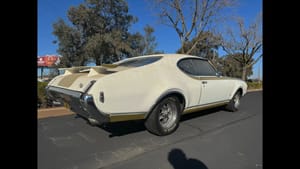A seized 1981 Chevrolet Camaro Z28, once owned by drug dealers, has been transformed into a patrol car.
The Saginaw County Sheriff's Department in Michigan has transformed a classic 1981 Chevrolet Camaro Z28, once owned by drug dealers, into a fully operational police patrol vehicle. This rare move comes after the car was seized during a lengthy investigation into drug cartel activity in the county, which also led to the confiscation of $289,000 worth of drugs and several convictions.
The Camaro, a symbol of American muscle, was forfeited to the Sheriff's department as part of the legal proceedings. Rather than letting the car sit unused or auctioning it off, Sheriff William Federspiel and his team decided to convert the Camaro into a working police cruiser. What makes this story even more intriguing is that the entire process was funded by money confiscated from the drug dealers themselves—no taxpayer dollars were used.
Sheriff Federspiel explained that the Camaro’s purchase for $29,000 and its subsequent conversion into a police vehicle were all covered by the funds seized during the investigation. This approach not only saved taxpayer money but also turned a symbol of crime into a tool for law enforcement.
While it’s common to see unusual vehicles dressed up as police cars for promotional purposes, the Camaro is not just a showpiece. Sheriff Federspiel confirmed that the classic muscle car will be used in regular patrol duties, alongside modern police vehicles like Dodge Chargers and Ford Explorers. The Camaro's presence on the road is expected to be both functional and symbolic, serving as a reminder of law enforcement’s commitment to repurposing the tools of crime for the public good.
This unusual patrol car is likely to turn heads, not just because of its vintage appeal, but also due to its backstory. It’s a classic example of law enforcement creatively using resources to enhance their capabilities while delivering a strong message about justice. As the Camaro takes on its new role, it carries with it a narrative of redemption, showing how even the spoils of crime can be transformed into something that benefits the community.





